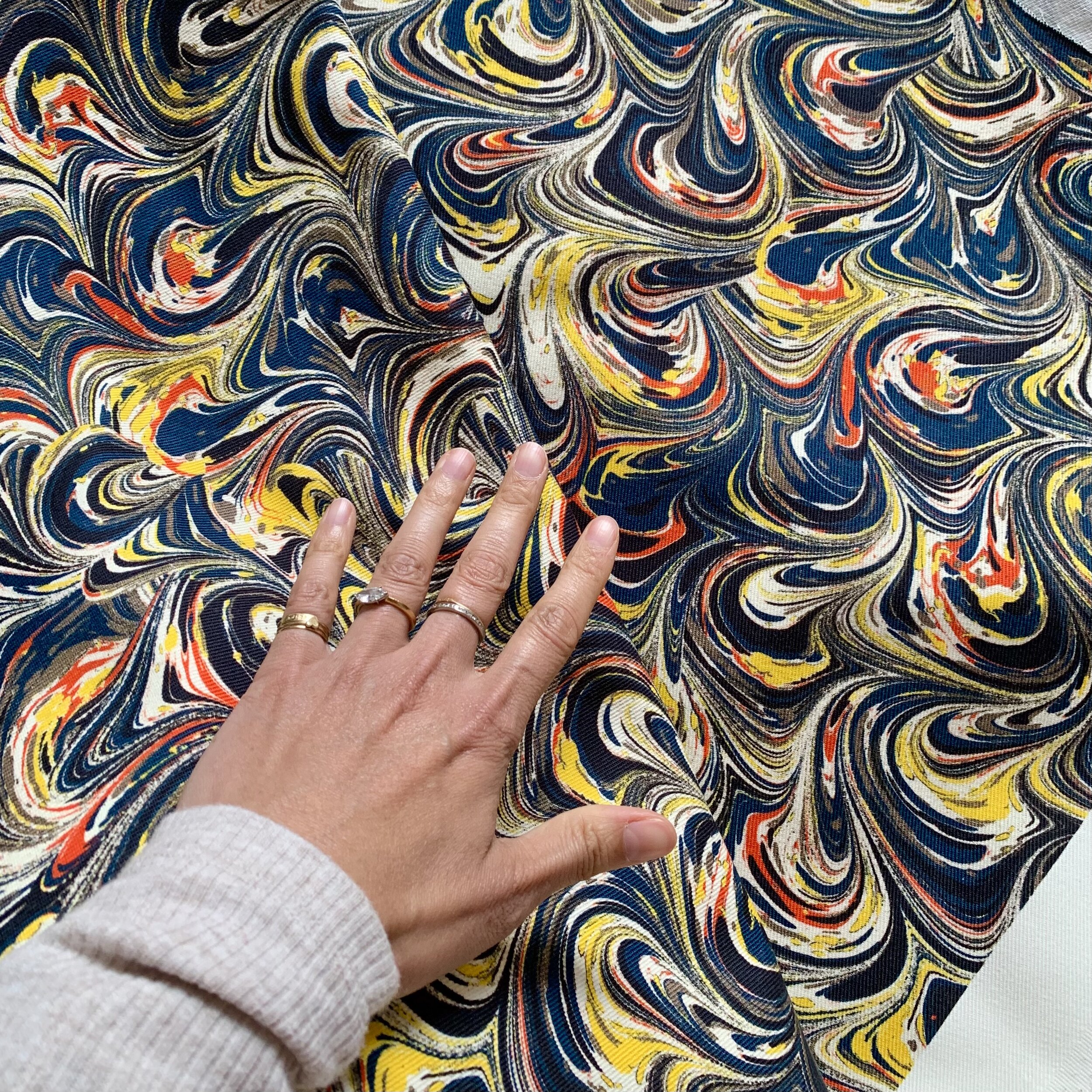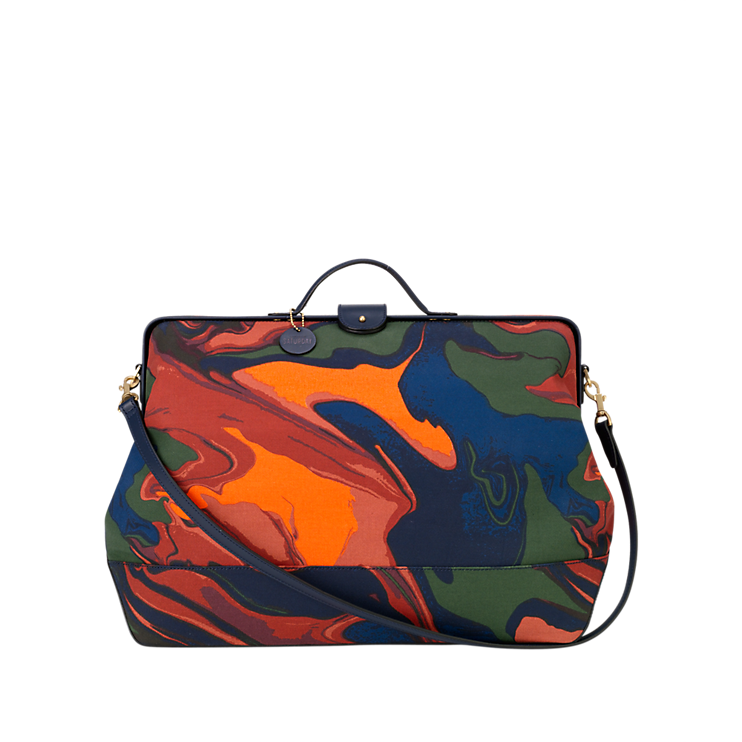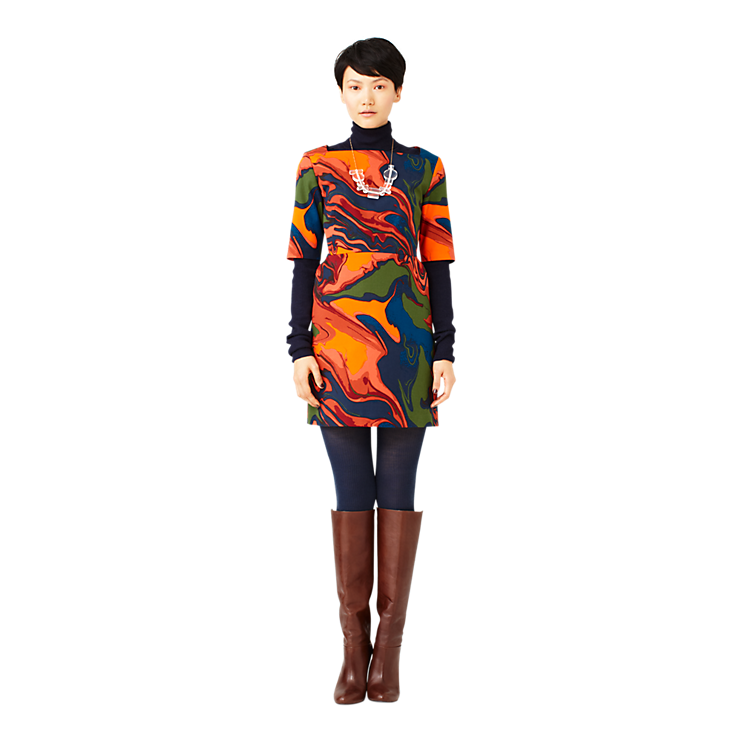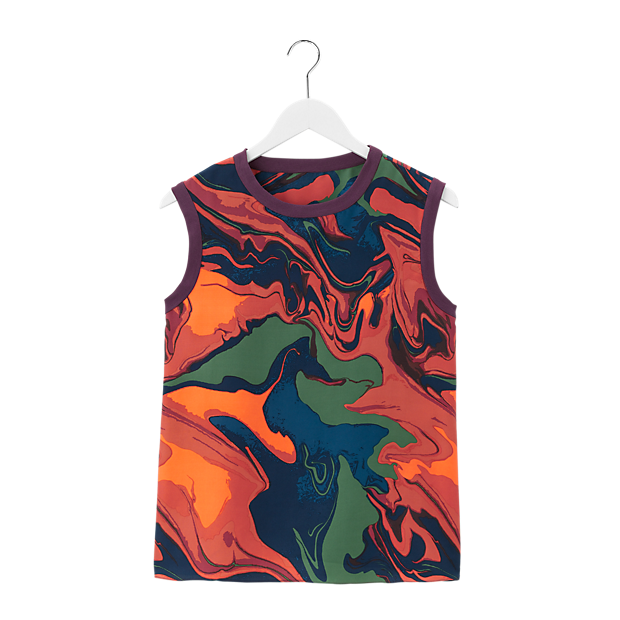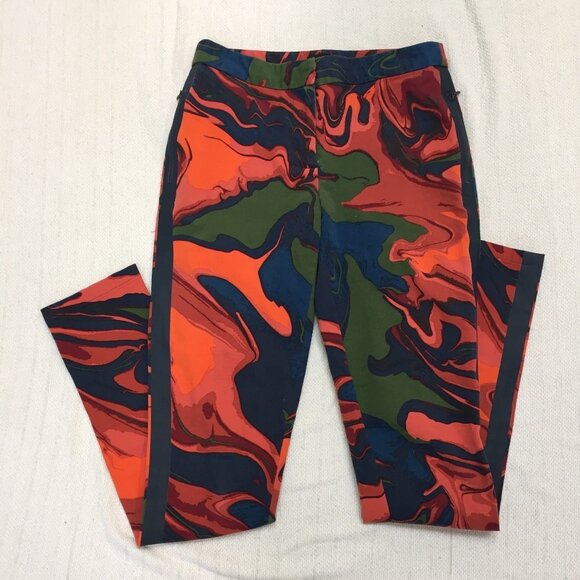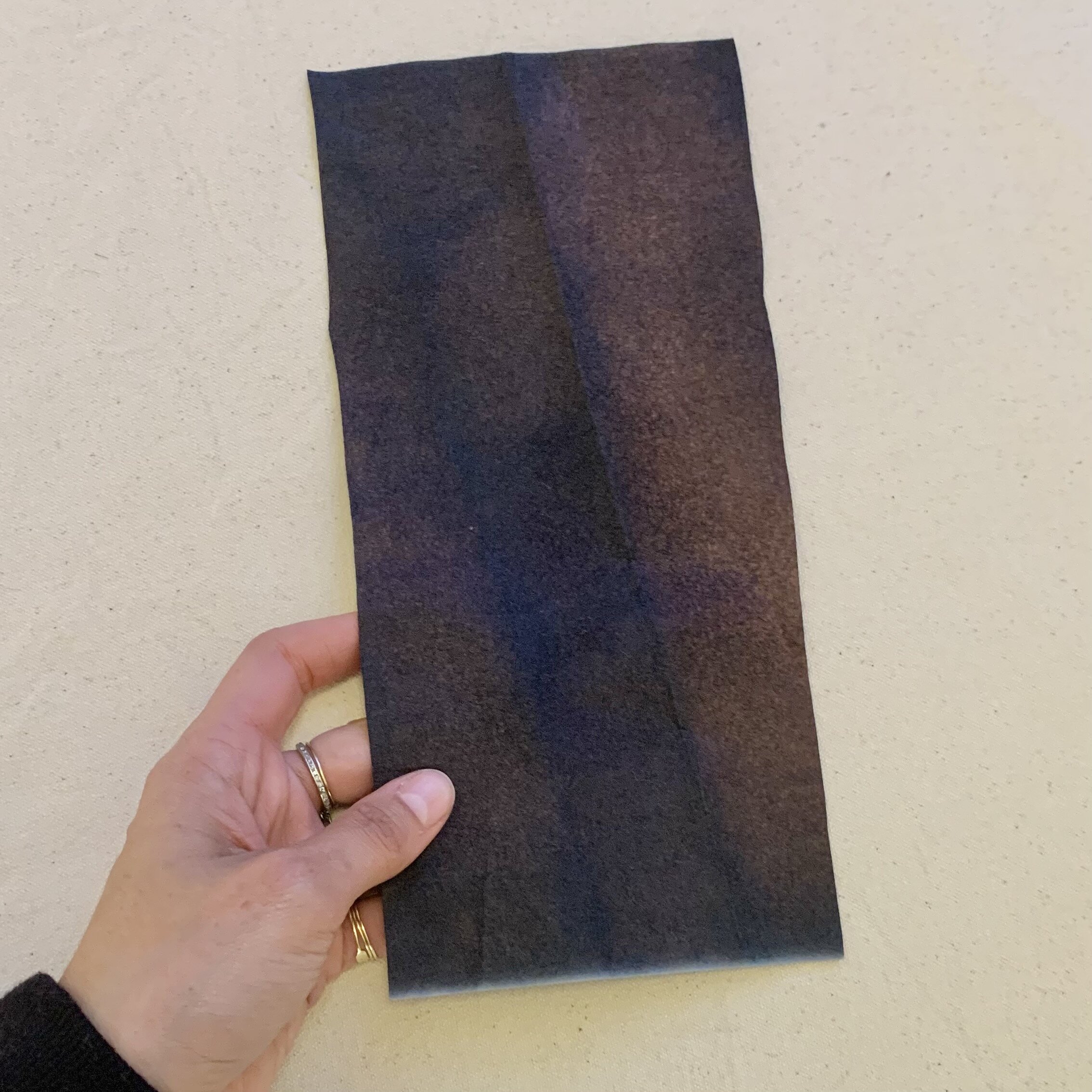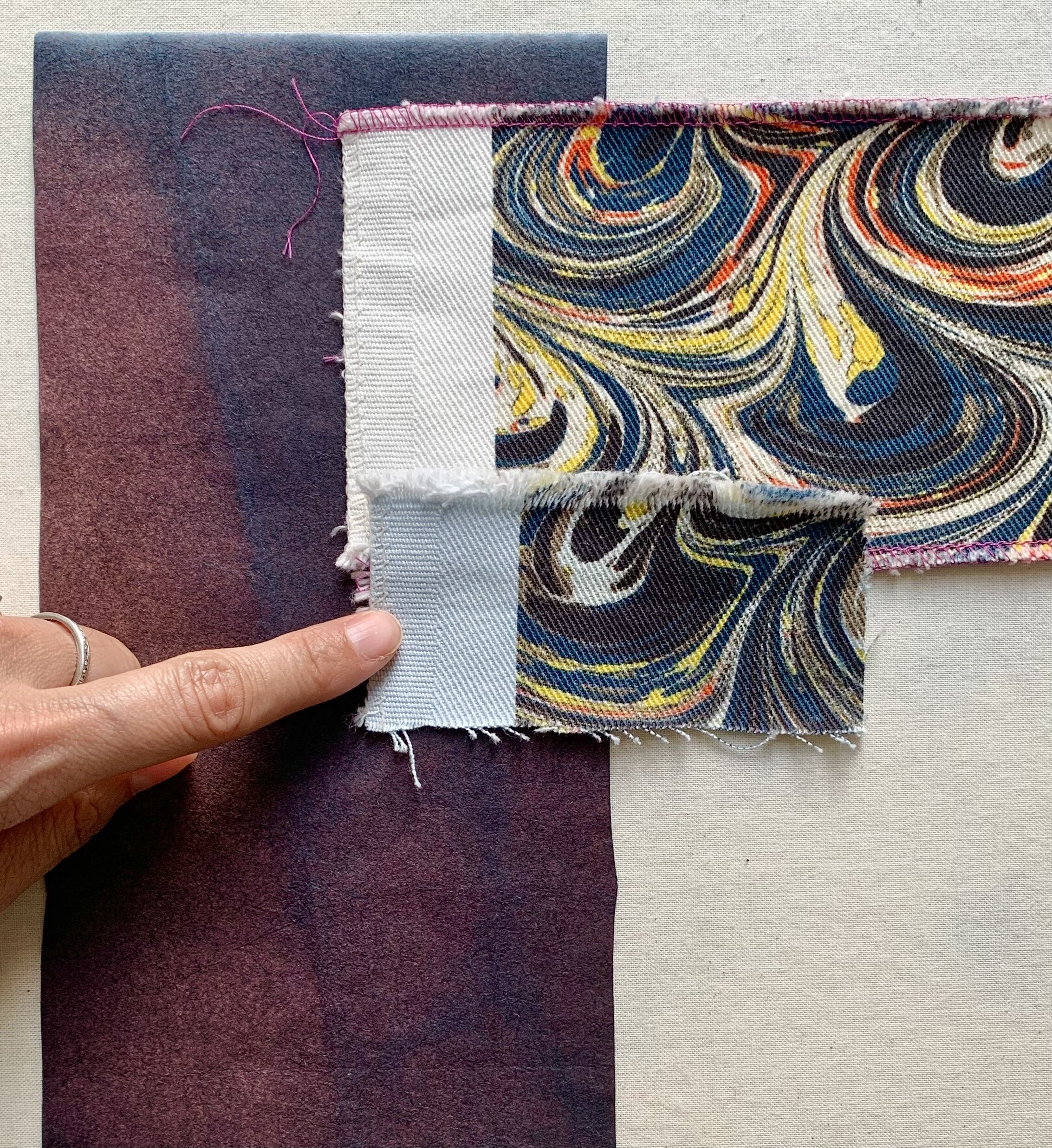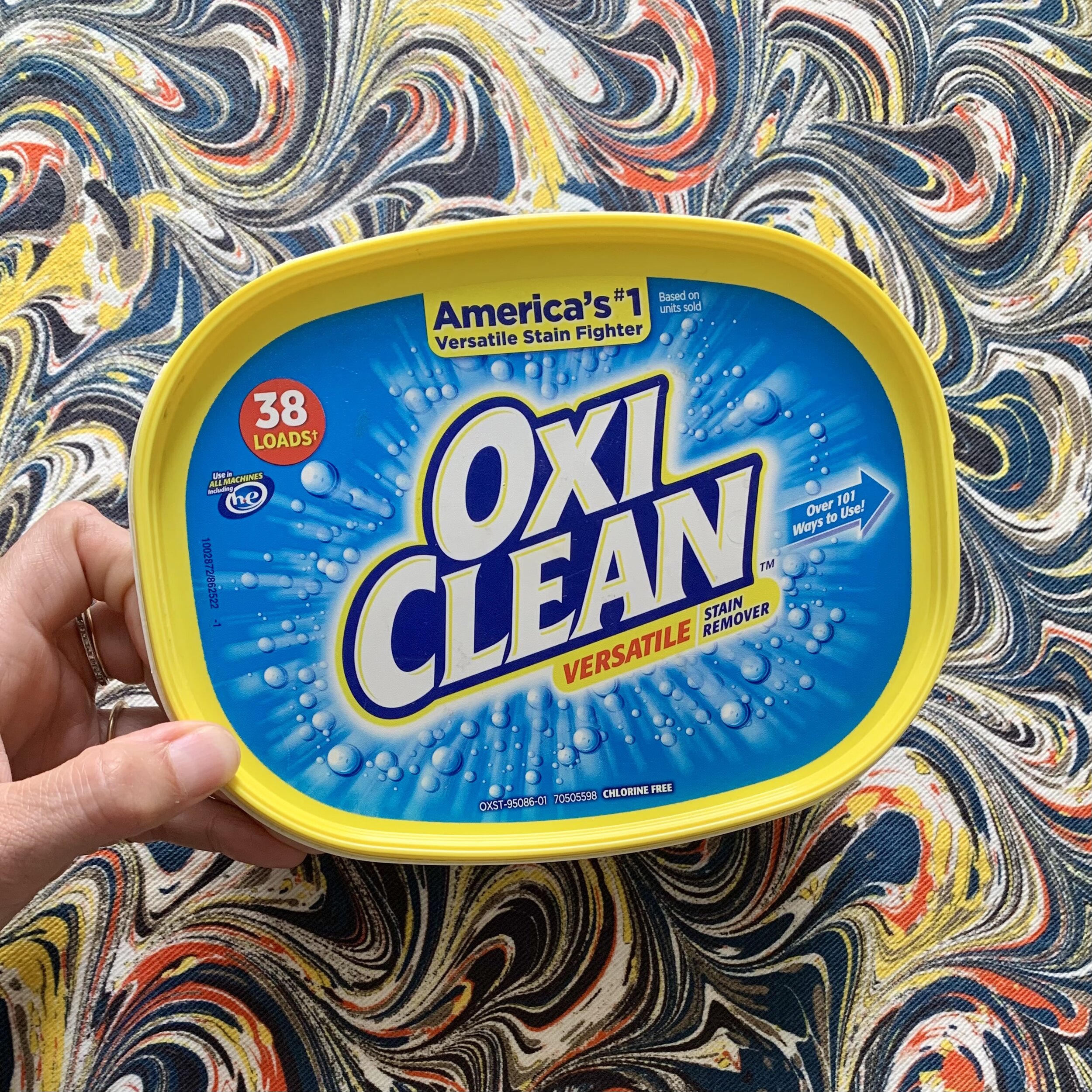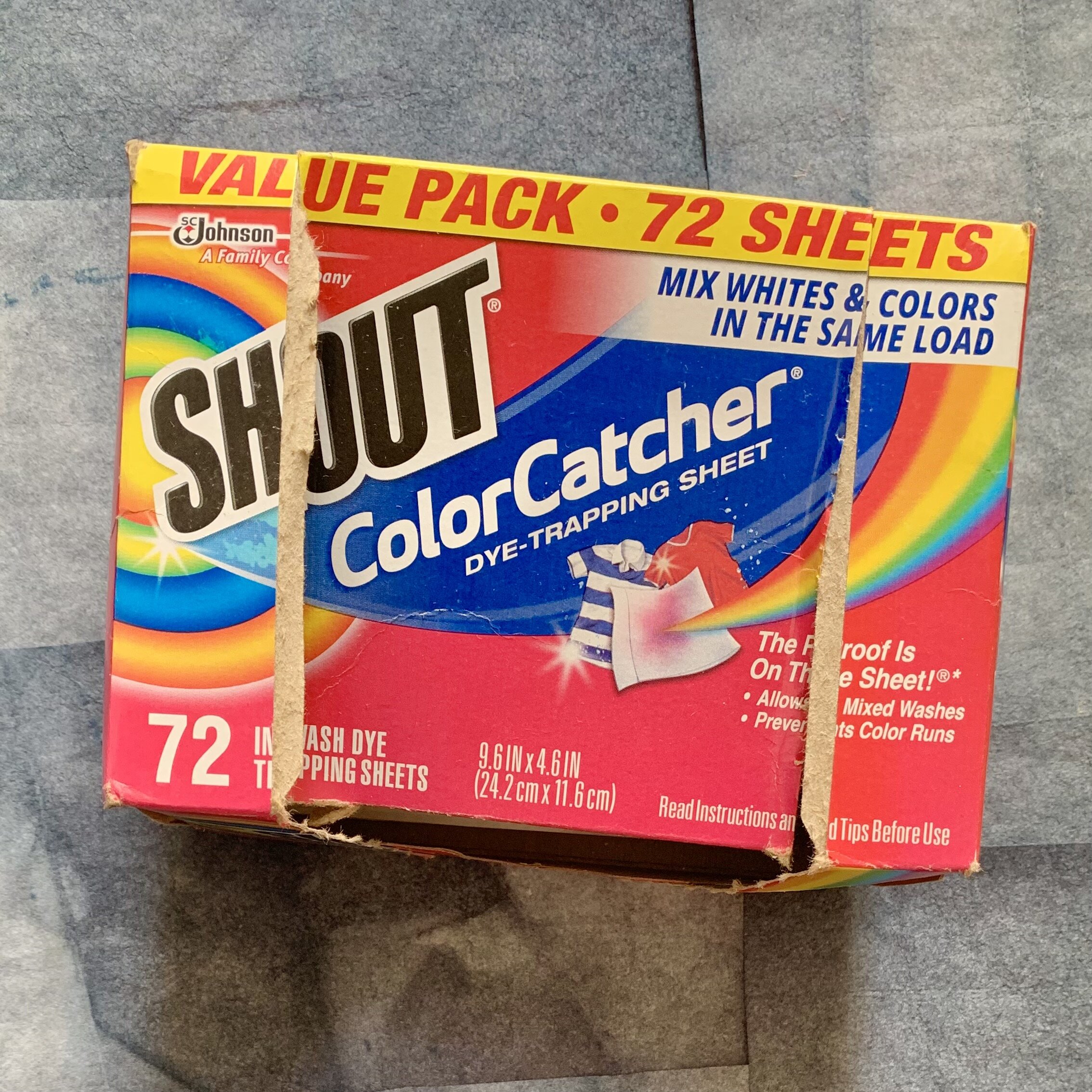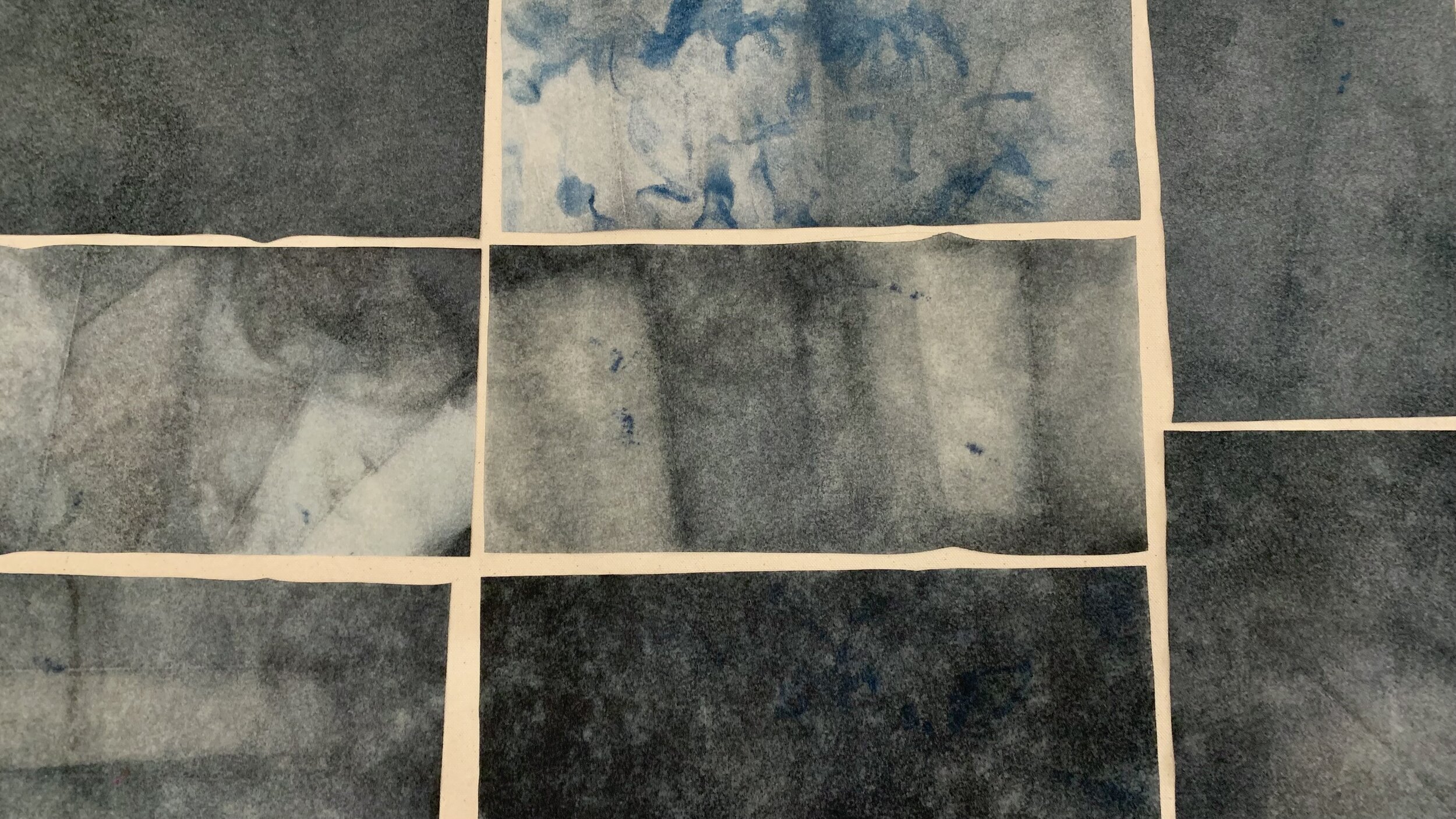MY FABRIC BLED COLOR EVERYWHERE - How To Save Fabric When the Color is Bleeding
As the seasons change, it has become apparent that I need more outerwear pieces. Here in Glasgow, you need pretty much every kind of layer imaginable, because the weather shifts quickly throughout the day, and there is a lot of humidity and precipitation. So naturally, I have been project planning far more coats and jackets than I could possibly sew.
Among those projects is a plan to sew a simple, slightly oversized coat out of this marble-print deadstock Dries van Noten denim. It is 100% cotton, non-stretch, and the printing quality is gorgeous. Definitely a screen printed textile, not digitally printed, so I admire the design work that went into getting many small details printed crisply, and a seamless repeat!
I had to have this Dries print, because I live with regret from not saving any pieces from Kate Spade Saturday in our Hot Lava print. I was the Senior Textile Designer at Kate Spade Saturday, and I drew and painted all of the prints for the line. For this print, I poured paint and swirled it around. It was difficult to prepare this design for screen printing, and to get a repeat that wasn’t noticeable. I am proud of my work on this one!
Since I don’t have it, I’ll have to make do with the Dries! lol
The Color Catcher from the first time I laundered my yardage.
I don’t usually hesitate before pre-washing fabric. It’s just part of the process of sewing; once I bring fabric home, I wash it on the hottest setting I think it can handle (I make exceptions for wool and silk; and I don’t sew with rayon or viscose, which require more care).
Because this fabric was expensive and special, I decided to play it safe. I cut a swatch and serged the edges. I measured it so I would be able to tell if it shrank. I drew on it with several marking tools, to ensure that if I used those tools while sewing, I could get the marks out later. I tossed it in the wash with a color catcher. Guess what? It came out fine: all markings were gone, and it shrank slightly, which is to be expected with cotton. The color catcher was no worse for the wear.
I still felt a nagging feeling about washing the fabric, because large cuts of denim can get creased when laundered. But I decided to go for it. I changed the washing machine’s settings to have a low spin at the end of the cycle (that’s usually when it spins out all the excess water), to decrease the chance of creases.
The swatch I am pointing to is a swatch from the fabric after I laundered the yardage.
An hour or so later, I went to pull the fabric out of the wash, and my heart sank. Oh, my god, it looked horrible. In the photo above you can see the swatch that I described earlier - the one that came out fine. The smaller swatch is cut from the fabric after I laundered the whole piece of denim.
Blue had bled everywhere. All of the white base fabric was now blue, so all contrast was taken out of the print. It looked dingy and sad. Additionally (sorry, I didn’t take photos of this) there were blobs and streaks of blue randomly all over the fabric. I hung the fabric up to dry, and then sat on the floor in the hallway and cried.
Once that was out of my system, I figured, I can’t make it any worse, and I got to work.
I brought this with us when we moved overseas. I have been told that the UK equivalent of Oxi Clean is Vanish.
I dug out this tub of Oxi Clean (wish I’d found it sooner, tbh) and a large tupperware bin from the move. I filled the tub with hot water, and measured out Oxi Clean per the instructions on the tub (Read! The! Instructions!!). I dissolved the powder in boiling water, and then added it to the tub. Then I put in the fabric, which was still wet from the washing machine.
The water immediately turned thick, deep, dark blue. As I swirled the fabric around in the water, the water only got darker. Miraculously, the fabric seemed to be turning more white. I drained and rinsed the fabric, and then repeated this process. If you’ve ever done something like this, then you know, it is exhausting! The fabric and water are so heavy! And you have to keep cleaning things as you go, because splashing is inevitable.
Shout Color Catchers that I brought with me when we moved. I have seen a similar product sold here in Scotland, made by Dylon.
Still following the instructions on the tub of Oxi Clean, I again dissolved the powder in boiling water, and this time poured it into the bottom of the washing machine drum. Then I added the fabric. I put a small amount of a gentle laundry detergent in the dispenser. I also added 8 color catchers.
Here are the color catchers after that final wash - proof that the fabric was still leaching color.
The fabric emerged from the machine good as new. I could not believe my eyes. The white was white! The colors were crisp and clean. And there seems to be plenty of blue left, because those colors are as saturated as ever.
What is going on here? A primer on some of these products!
When I showed this process on Instagram, a few people asked me why I didn’t use a product such as Retayne or Rit Color Stay Fixitive, so I wanted to give a brief explanation of what each of these products does, which will hopefully help you decide which one is the right product, should you find yourself in this kind of situation. I also have to say, there is a lot of nuance to this: solid colors are usually leaching dye, printed fabrics could be printed with dye, or with pigment, which behaves differently. I suspect my fabric is printed with pigment.
When a fabric is leaching color, that color releases into the water around it, and then re-deposits back into the fabric, causing blobs, stains, or in my example, making the white fabric blue. Color catchers literally catch this excess color, and absorb it (they do this because they are made out of nylon, a material that loves to absorb dye), thus removing the excess color from the situation.
Edit to original post: I’ve gotten some questions about Synthrapol. I didn’t mention it when initially writing this post because I did not use it (I don’t have any at this time - we could not bring liquids when we moved, which is why the other products came with me, but liquid soaps did not!), but it’s worth having in this list. Synthrapol is a detergent you will always encounter in dye labs as it is designed to prevent blotchy color. I’ve had a lot of experience with it and I recommend it. It keeps loose dye in suspension, which prevents it from re-staining the fabric. So, it’s kind of doing the same thing as color catchers, without the physical evidence of a stained sheet at the end of the wash cycle. I think Synthrapol may have helped me in the pre-wash phase, however SO MUCH blue was released, I am not sure it could have all been kept in suspension (the color catchers couldn’t catch all of it, either).
Let’s say you have a solid color fabric, and you want it to remain bright and saturated. You don’t want to lose that extra color! This is when a product like Retayne or Rit Color Stay Fixitive will help you. Those products push excess dye out of the water and back into the fabric. In my instance, I did not want that! That would cause the blue color to be pushed back into the white fabric.
Oxi Clean is an oxygenated bleach, a bleaching product that is less damaging than chlorinated bleach. It is a super powerful stain fighter! I wanted to remove the stain of blue from the white parts of my fabric, and that is exactly what the Oxi Clean did. It is color safe, so it left the other colors alone. Through the wash cycle, when blue was still being released into the water and being caught by color catchers, the Oxi Clean kept my fabric bright. Honestly, this seems miraculous.
This has already gotten quite long, so I’m gonna leave it here! Thank you so much for reading! If you found this post helpful, please consider making a “tip” to my Kofi account. Any amount is greatly appreciated. Tips help offset the cost of materials used when creating my blog content, as well as helping keep this blog ad free. Thank you & happy sewing! XO, Martha
